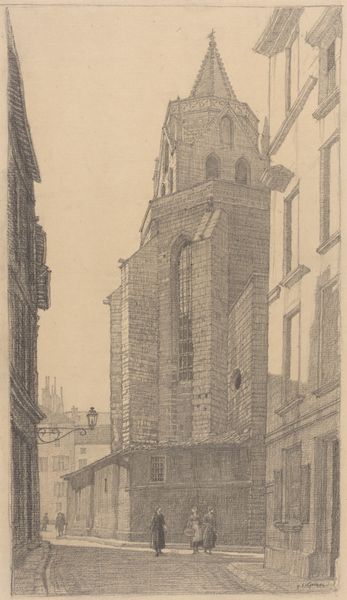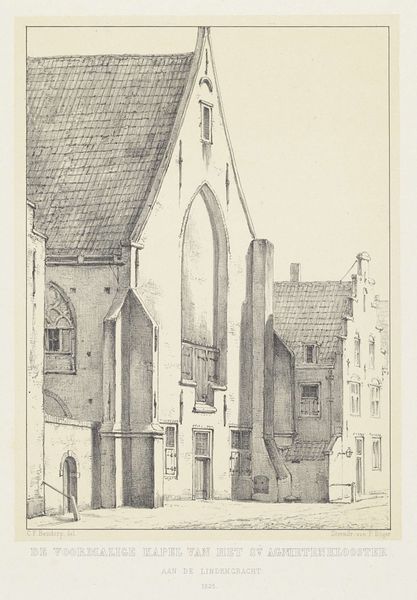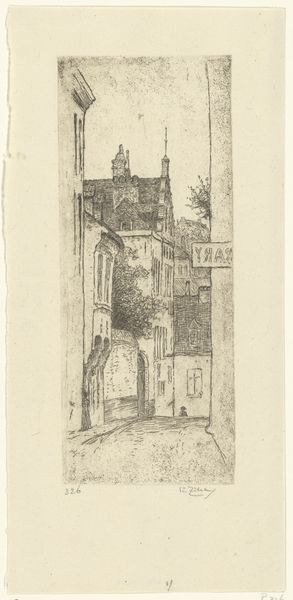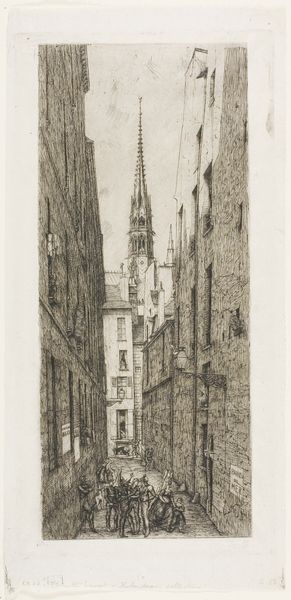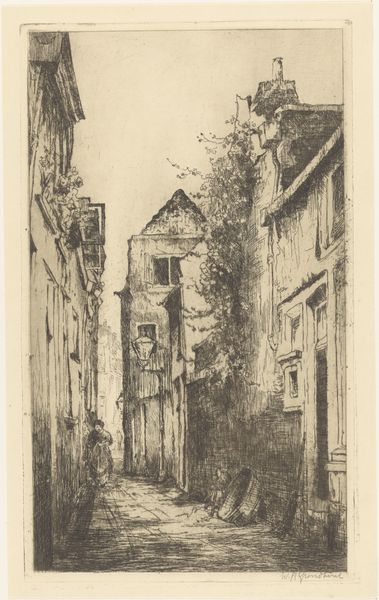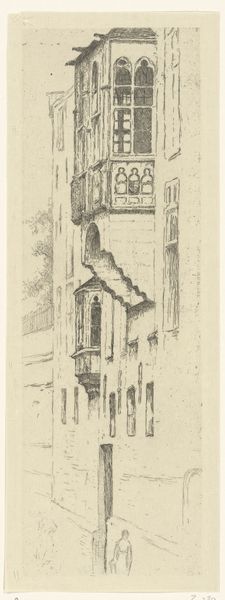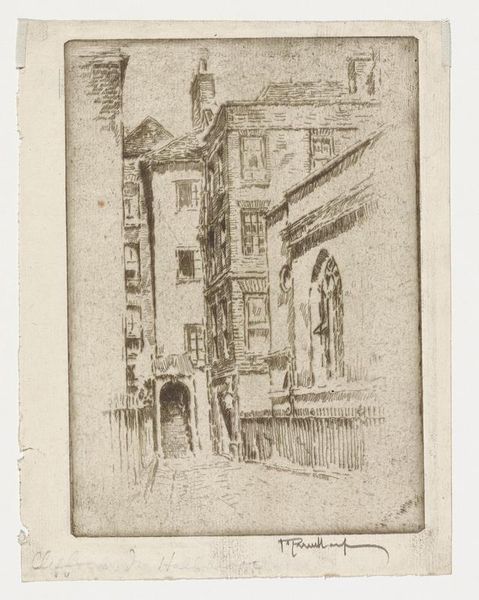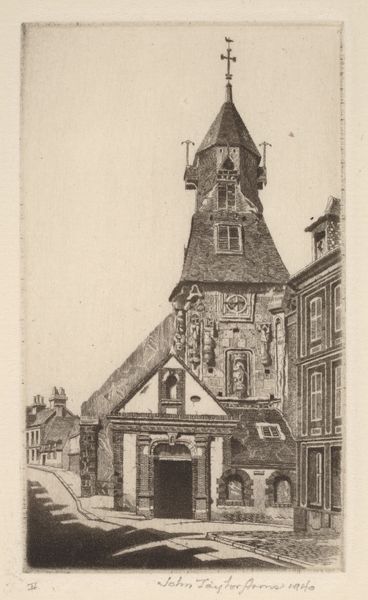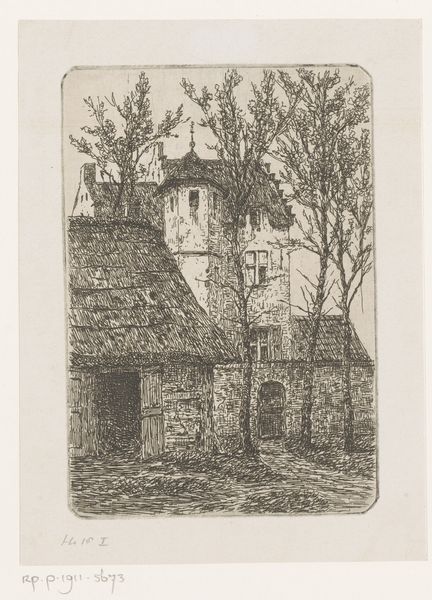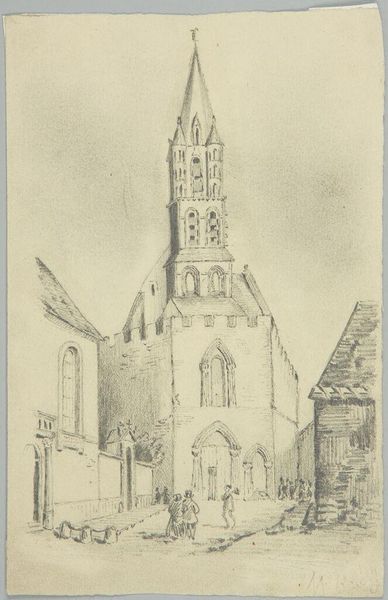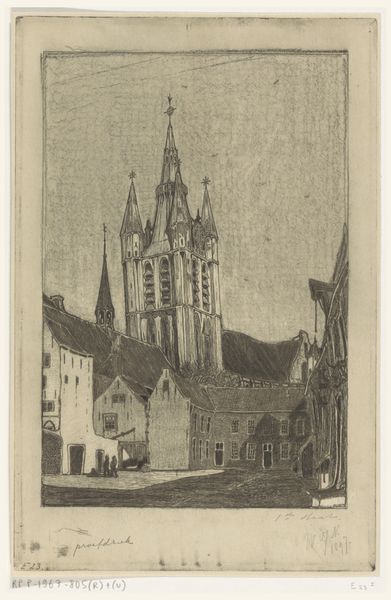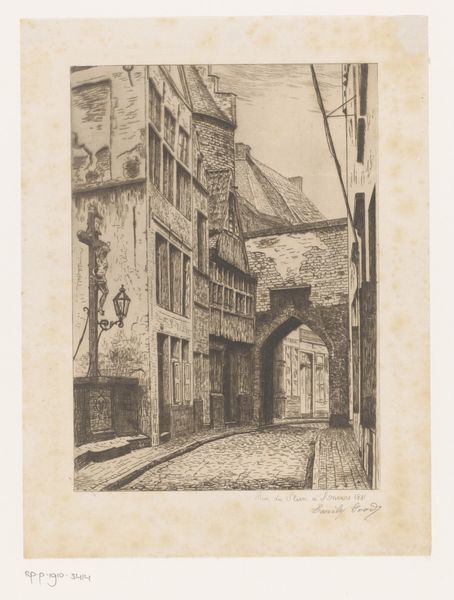
drawing, print, etching, pencil, architecture
#
drawing
# print
#
etching
#
etching
#
pencil
#
cityscape
#
architecture
Dimensions: height 487 mm, width 323 mm
Copyright: Rijks Museum: Open Domain
Editor: Here we have "Klooster Mariënborn in Dordrecht," a cityscape etching by Carel Frederik Bendorp, dating to 1872. It's… almost dreamlike in its soft, muted tones. The architecture seems to fade into the sky. What strikes you about this particular piece? Curator: Well, for me, it’s the vulnerability etched – pun intended! – into the very stones of this monastery. Bendorp doesn’t just show us a building, does he? The soft pencil and subtle etching make it appear as though the monastery breathes. Do you see how the light gently kisses the facade, suggesting both strength and the inevitable passage of time? Editor: That's a beautiful way to put it, breathing! The shadows and the almost hazy quality definitely add to that feeling. Were cityscapes a common subject at the time? Curator: Indeed, especially those whispering tales of a disappearing past! There was a whole mood happening – the industrial revolution changing cityscapes so fast – etching was ideal to capture the old just as it’s fading from living memory. What do you think Bendorp is trying to say here? Editor: Perhaps a longing for a simpler, more spiritual time? Or maybe just a desire to preserve the beauty he saw before it vanished completely. The open window... is that an invitation perhaps? Curator: Ooh, I like that interpretation, Editor, yes! It definitely has that 'open door to the past' thing happening, doesn't it? The subtle clock – tempus fugit, time flies… a gentle reminder, perhaps? What a lot Bendorp manages to say! Editor: This has really changed how I see the piece! I was so focused on the technique, I didn't consider the emotions behind it. Curator: Isn’t it grand how art does that? It meets you where you are, then gently nudges you toward a new perspective. Never be afraid to bring *yourself* to the artwork, that's the magic of it all!
Comments
No comments
Be the first to comment and join the conversation on the ultimate creative platform.
